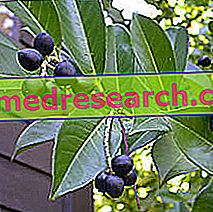Definition
The term "legionellosis" indicates a heterogeneous group of infections sustained by obligatory aerobic gram-negative bacteria, belonging to the genus Legionella; Legionnaires' disease is the most dangerous form of legionellosis, but Pontiac fever also exists, in its two clinical forms (acute and sub-clinical flu-like).
Causes
Legionellosis is mainly triggered by the bacterium Legionella pneumophila : the bacteria is transmitted through the inhalation of infected water droplets, although sometimes the infection occurs through the inhalation of micro dust particles derived from the drying of contaminated aerosols. Contamination between man and man is unlikely.
Symptoms
Legionnaire's symptoms begin 2-14 days after exposure to the bacterium; the most frequent are: chills, mental confusion, breathing difficulties, muscle pain, high fever (40 ° C), loss of appetite, malaise, shortness of breath, gastrointestinal symptoms (diarrhea, nausea, vomiting). Pontiac fever does not involve the lungs, unlike the legionnaires' disease proper.
Information on Legionellosis - Drugs for Legionellosis Care is not intended to replace the direct relationship between health professional and patient. Always consult your doctor and / or specialist before taking Legionellosis - Drugs for Legionnaire's Treatment.
drugs
The administration of some antibiotics is particularly effective for the treatment of legionellosis; the less severe form of the infection, Pontiac fever, tends to self-cancel within a few days, without the need for drugs or specific treatments.
The antibiotic drugs used in therapy for the treatment of legionellosis are erythromycin and rifampicin; In these useful years some fluoroquinolones have also been identified as an effective alternative therapy for the treatment of legionellosis. For the purposes of treatment, penicillins, aminoglycosides, tetracyclines and chloramphenicol are ineffective.
- Erythromycin (eg Erythrocin, Erythro L, Lauromycin): is the drug of choice for the treatment of legionellosis. In light of recent studies it seems that erythromycin, a macrolide drug, is the most effective active ingredient for treating the disease: in fact, it has been observed that the administration of this drug reduces mortality and speeds up remission of the prodromes. Most of the time, the therapy should be prolonged for a long time (at least three weeks), since the relapses tend to occur very frequently. The recommended dosage can range from 2 to 4 grams per day, starting therapy with an intravenous administration every 6 hours. Most often, the first benefits from the clinical response can be seen after 3-5 days. After this period, it is possible to take the drug orally, at a dose of 600 mg, every 6 hours: continue with this dosage for about 10 days (the duration of therapy can be prolonged when the patient suffering from Legionnaire's disease is immunocompromised). In some patients, it is possible to associate erythromycin with rifampicin.
- Rifampicin (eg Rifampic): this bactericidal antibiotic is used in therapy to treat legionellosis: the active ingredient penetrates inside the leukocytes, exerting its therapeutic activity directly in the endocellular pathogens, inducing however the manifestation of resistance. The indicative dosage is to take an active dose of 600 mg, orally or intravenously, once a day; prolong therapy for 2 weeks or as prescribed by your doctor. Rifampicin may be associated with erythromycin or doxycycline.
- Sulfamethoxazole and trimethoprim (eg. Eusaprim oral, Bactrim): the pharmacological formulation consists of two active sulfonamide principles which, acting in synergy, enhance the therapeutic effect, speeding up the recovery time from legionellosis. Generally, the two active ingredients are dosed with a 1: 4 ratio (eg 80 mg of trimethoprim and 400 mg of Sulfamethoxazole). Indicatively, take 2 tablets every 8-12 hours, depending on the severity of the infection and the age of the patient.
- Doxycycline (eg Doxicicl, Periostat, Miraclin, Bassado): it is an antibiotic belonging to the class of tetracyclines; it is not the drug of choice for the treatment of legionellosis, but in some cases it seems to be more effective and better tolerated. Indicatively, the dosage plans to take 100 mg of active intravenously every 6 hours.
- Ciprofloxacin (eg. Ciprofloxac, Samper, Ciproxin, Kinox): indicatively, take the drug (quinolones) at a dose of 750 mg, orally, every 12 hours: it seems that this dosage is quite effective for the treatment of legionella.



